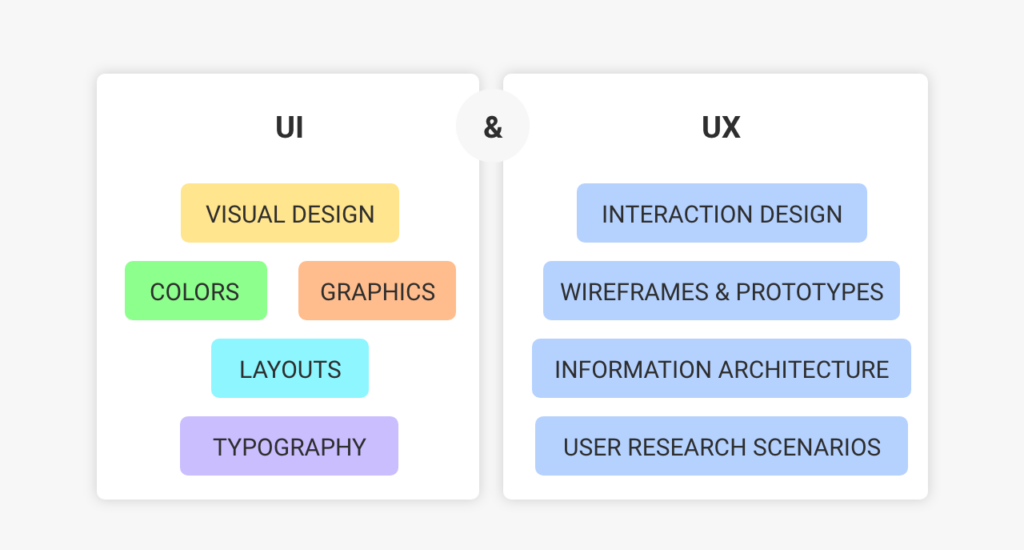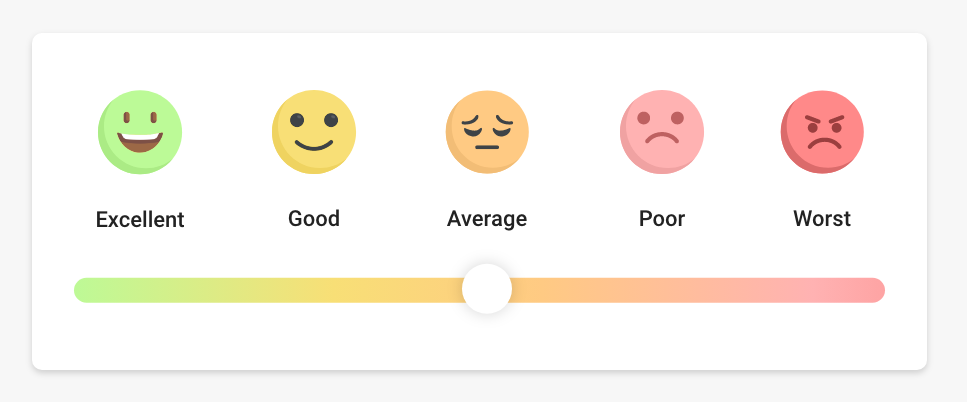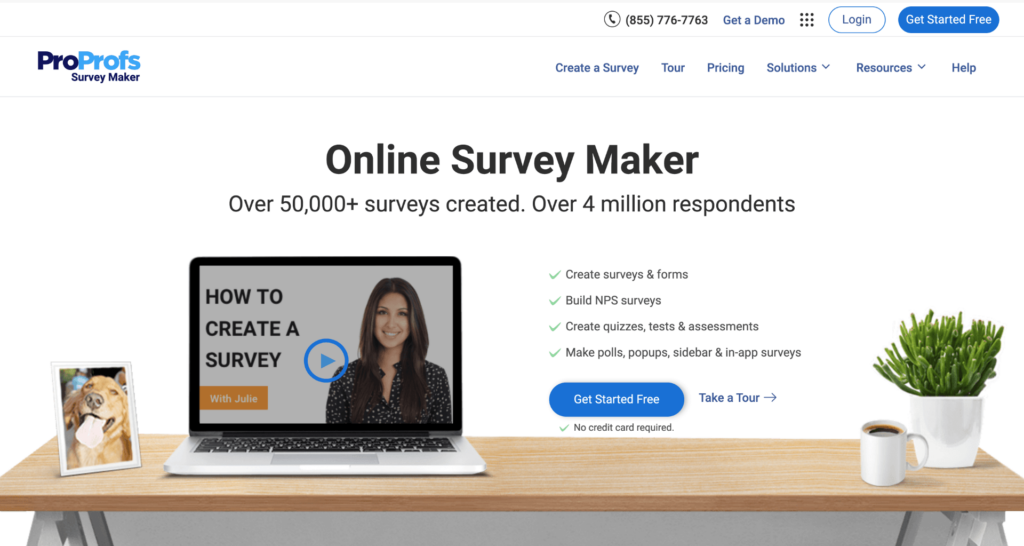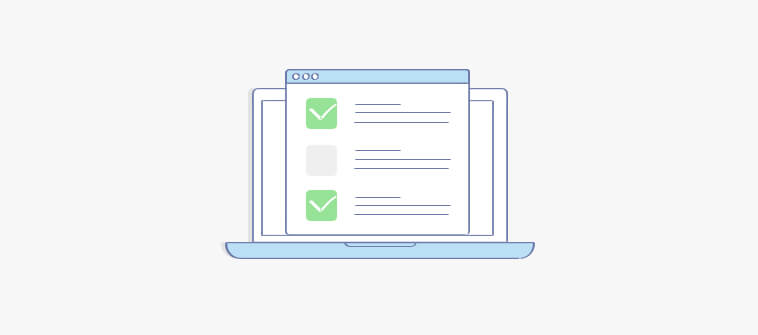
User experience, or UX, is pivotal in determining how well a website will fare: a staggering 40% of users will abandon a site if it doesn’t load within three seconds.
The good news? A simple usability test with just five users can uncover up to 85% of UX issues. To dive deeper, regular user surveys can tap into how your audience really feels, provided you ask the right questions.
I’m here to help with that. Below, you’ll find the 50+ essential UX survey questions that you can’t afford to miss.
But first, let’s cover some fundamentals, including a short tutorial on survey creation, in case you aren’t familiar with it yet.
Watch: How to Create a Survey Using ProProfs Survey Maker
What are User Experience (UX) Surveys?
User experience surveys are conducted to gauge the user’s experience of a software product or website in terms of usability, functionality, satisfaction, and overall experience. This is done through a set of well-selected user experience questionnaires directed to a client or target audience.

Some key aspects of UX surveys are:
- Questions about how easy or difficult it is to use the product (such as navigation, finding information, completing tasks, etc.)
- Pinpointing areas where users encounter difficulties or frustration, which might not be evident through other forms of testing or analytics
- Questions about users’ brand loyalty and overall satisfaction with the product, often asking for ratings on the website experience
- Collecting demographic information like who the users are (age, profession, etc.)
You can conduct UX surveys at various stages of a product’s lifecycle, from initial concept testing to post-launch and onboarding a client onto your product.
Through a user experience survey, you can collect both quantitative and qualitative user data and gain insight into what they think about your product, as well as their preferences, expectations, and pain points.
Read More: Survey Question: 250+Examples, Types & Best Practices
What Should You Ask in Your UX Survey? 50+ Examples
Here are over 50 example questions you might consider including in your UX survey, grouped by their primary focus. You can modify them to fit specific contexts and gather the required information from your user base:
Usability and Functionality
- How easy was it to navigate our website?
- Did you encounter any difficulties while using our app?
- How would you rate the checkout process on a scale of 1-10?
- Were there any features or functions you expected to find but didn’t?
- How responsive do you find our application?
User Satisfaction
- How satisfied are you with the overall experience?
- Would you recommend our product to a friend or colleague?
- What was your initial impression of the app?
- How does our product compare to others you have used?
- What would you change about our website to improve your experience?
Specific Interactions
- How satisfied were you with the customer support you received?
- Was the information on our site helpful and accurate?
- How clear are the instructions provided in our product?
- Did you find the search functionality helpful?
- How effectively does our app meet your needs?
Design and Aesthetics
- What do you think of the design and layout of our website?
- How would you rate the visual appeal of our product?
- Are the fonts and colors visually pleasing?
- Is the content well organized?
- Does the style of our app enhance your experience?
Engagement and Retention
- How often do you use our product?
- What motivates you to return to our app?
- Have you discovered new features during subsequent visits?
- What features do you use the most?
- What makes our app indispensable to you?
Technical Issues
- Have you experienced any bugs or glitches while using our product?
- Is there anything about the app that feels slow or unresponsive?
- How often do you encounter technical issues?
- What kind of device do you use to access our product?
- How would you improve our app’s performance?
Emotional Response
- How does using our product make you feel?
- Is there anything about our app that frustrates you?
- What is the most enjoyable aspect of our product?
- Does our product help relieve your stress in any way?
- What emotions do you associate with our brand?
Demographics
- What is your age range?
- What is your occupation?
- How tech-savvy do you consider yourself?
- What region are you accessing our service from?
- What is your primary language?
Open-Ended Feedback
- What do you like best about our product?
- What is the one thing we should definitely keep doing?
- What is your biggest challenge or frustration with our product?
- How can we make your experience better?
- What additional features would you like to see?
Strategic Insights
- How well does our product meet your expectations?
- How did you first hear about us?
- What persuaded you to choose our product over competitors?
- In what ways does our product add value to your life?
- How likely are you to purchase upgrades or additional features?
How to Conduct UX Surveys?
Conducting a UX survey effectively boils down to a few key steps:
- First, clearly define your goals. What specific insights are you seeking?
- Next, craft your questions thoughtfully—mix quantitative scales with open-ended queries to capture a broad spectrum of data.
- Choose the right audience; your survey should target users who directly interact with your product.
- Timing is crucial—catch users right after they’ve engaged with your product for fresh, accurate feedback.
- Finally, analyze the data to identify trends and actionable insights that can guide your next design improvements.
As online UX surveys are faster, more accurate, and more convenient for both respondents and researchers, it is crucial to choose a survey tool that will allow you the vast expanse of question types you will need to catch accurate data, ensure high response rates, and analyze them in-app.
Done right, UX surveys can dramatically enhance your product’s user experience and ensure it truly meets user needs.
Read More: Qualitative vs Quantitative data: Difference, Methods & Analysis
What Are the Benefits of Conducting UX Surveys?
UX surveys serve the role of establishing a direct line to your users’ thoughts and feelings. It’s a powerful way to pinpoint exactly what’s working and what’s not.
Below is a detailed breakdown of the advantages of conducting these surveys:
Enhanced User Satisfaction
By asking users directly about their experiences, you can identify what delights them and what frustrates them. This knowledge allows you to tailor your product to meet their needs better, boosting overall user satisfaction.
Informed Decision-Making
UX surveys provide concrete data on user preferences and behaviors. This information serves as a valuable guide for making design choices, prioritizing feature developments, and resolving usability issues with precision.
Increased User Retention
When users see their feedback leading to real improvements, they feel valued and more connected to your product. This not only improves current user engagement but also increases the likelihood they will stick around long term.
Competitive Advantage
Understanding user needs more deeply than your competitors can give you a strategic edge. A product that consistently meets user expectations is more likely to stand out in a crowded market, attracting new users while keeping existing ones happy.
Cost Efficiency
Identifying and fixing issues early through regular UX surveys can significantly reduce the long-term costs associated with large-scale changes. This proactive approach saves both time and resources, optimizing your development cycle.
Examples of UX Survey Questions
The questions you can ask in a UX survey are endless. To make things easier for you, here are the top 10 popular UX survey examples.
Check out.
1. How did you first come to know about our product?
This question can reveal a lot about the effectiveness of your marketing and advertising exercises. It can show you which channels are working to bring people to your doorstep and which areas you need to focus on.
You can identify whether most of your customers are coming from organic traffic, paid traffic, direct traffic, or referral traffic.
Pro Tip: Based on the answers to this question, start targeting new visitors in places where they frequent so that you can capture leads.
2. What was the first thing that came to your mind when you saw our product?

Source: SlideModel
This is the best way to understand how users perceive your product. It will help you clearly identify what impresses them most about it.
Pro Tip: Let users write a sentence or two about what they think the first time they see your product. This will help you analyze the data better.
3. Which of our competitors did you consider before choosing us?
User research survey questions like this can help you know your real competitors. This is significant since sometimes you may be surprised by who your users consider your competitor. It can add a new twist to how people see your brand.
Pro Tip: Include this question in post-purchase UX surveys to know who you’re competing with, in the market.
4. Why did you decide to choose us over our competitors?
This question will reveal your USPs or advantages over some of your closest competitors. Users can choose you for a number of reasons, such as your extensive features, competitive pricing, or exceptional customer service.
Once you know the “why” to it, you can easily understand how to attract more customers using those features.
Pro Tip: Use this question in post-purchase user experience surveys (you can even ask your existing customers about it!)
5. What do you like most about our product?
If you want to find out what it is about your product that makes your users delighted, you should ask this question. It can help you work further on improving the features that they find truly significant.
Pro Tip: The end goal of such questions should be to upgrade your product or website for a seamless user experience. Let your users freely express in a few words what they think it is that helps them most.
6. What do you least like about our product?
Similar to the above question, this question can shed light on your weakest or most vulnerable product feature. This will enable you to course-correct the existing problem before it aggravates.
Pro Tip: You may pose this question to both first-timers and long-standing customers. Request them to pinpoint the nature of the problem and seek suggestions on how they think it can be corrected.
7. How user-friendly is our product?
Customers’ number one consideration for software products is usability. So, it is necessary to know how your product fares in this area. You can offer various responses, ranging from “Very Easy” to“Very Difficult.”
Pro Tip: Provide balanced options for response, including both positive and negative responses. Also, you may preferably add a “Why” in case of a negative response to identify the reason behind it.
8. Which features do you find most helpful?
You already know your product’s top features, but it is also possible that your customers are focusing on some other features that you take for granted. This question can help you rethink everything and start concentrating on the features that your users find important.
Pro Tip: Target users who have been using these features for some time to identify and meet their specific requirements.
9. Which features do you find least helpful?
Equally important is identifying the features that your users find to be of little help. You can then fix them to increase their value while concentrating on those that your users really need.
Pro Tip: You may target your existing user base here as well.
10. How likely are you to recommend our product to a friend or colleague?
This question sums up all the likes and dislikes and the values users attached to your product. A willingness to recommend a product to others is a clear sign of customer satisfaction.
If they don’t feel like recommending it to others, it indicates disappointment on their part. This makes it one of the most important questions on the list.
Pro Tip: Target your regular visitors as well as existing customers. If you receive negative responses, ask “why not?” to obtain more details.
Tips to Create an Awesome UX Survey
Before you come up with your user experience survey questions, keep the following points in mind to get the best results with your user surveys.
1. Keep Questions Short and Simple
Asking no questions is better than asking complicated and twisted questions. When the questions are short and easy, your respondents will readily understand them, resulting in a higher response rate.
For example:
- Do you like our platform?
- How would you rate our product’s ease of use?
2. Ask Neutral Questions
At times, putting words into your respondents’ mouths may backfire in the form of skipping questions and refusing to take a survey ever again. Never persuade them to express an opinion that they would otherwise not want to. Provide room for a diplomatic answer.
Example:
- We believe we offer the best customer service experience. How awesome do you think it is? (Wrong question) ❌
- How helpful or unhelpful are you in finding our customer support? (Right question) ✅
3. Keep the Surveys Transparent
To make your surveys meaningful, the survey reporting should be transparent. You should share the survey results with all stakeholders so that they are aware of what emerged from the survey.
Likewise, the respondents should know that you’ve implemented their input. This will create a sense of trust in your business.
4. Respect Anonymity
Anonymous surveys are usually conducted on sensitive or controversial issues, such as workplace sexual harassment. By keeping the respondents’ identities anonymous, you protect their privacy and get more candid answers.
This means you get more accurate data as respondents feel free to share their honest opinions with you.
5. Let Users Skip Questions
Sometimes respondents find certain survey questions irrelevant or inapplicable to them, and they want to skip those questions. Here you can apply the skip logic. This feature lets you determine what question or page a respondent sees next based on their answer to the current question.
Allowing skipping in surveys presents a tailored approach to survey takers and keeps the questions short and relevant.
6. Ask One Thing at a Time
Focus on only one thing at a time in your surveys. Double-barreled questions tend to club more than one thing, which can be tricky for respondents to answer accurately. Such questions often include conjunctions, such as “or” and “and” to separate different items.
A better alternative is to break up the question into two separate ones since there’s no clear way to answer such a question.
Example:
- Do you exercise and drink lots of water daily? (Question to avoid)
- Do you exercise daily? (Preferred)
- How many glasses of water do you drink daily? (Preferred)
7. Check for Bias or Leading Questions
A biased, leading question is an unfair practice, and you should avoid it. Such questions are framed to force respondents to answer in a specific manner.
In other words, instead of eliciting an unbiased and honest answer, researchers just want to validate a predefined answer, which will result in inaccurate survey results.
Example:
- How delightful is our customer service team? (You already assumed that it is delightful.)
- What problems did you encounter with our newly launched website? (You already implied that a problem exists.)
Read More: Tips to Avoid Leading and Loaded Questions
8. Use a Balanced Rating Scale
A balanced rating scale is essential in accurately determining the user experience and satisfaction with your product or service.
While a balanced rating scale includes an equal number of options for positive and negative responses, an unbalanced scale tends towards more positive responses than negative ones.
Example:
How easy is our product to use?
- Very easy Easy Difficult Very Difficult (Balanced scale)
- Super easy Easy Average Difficult (Unbalanced scale)
9. Focus on Time, Not on the Number of Questions
Remember, the more questions you ask in a survey, the less time your respondents spend on each question. This can compromise their understanding of the questions and the accuracy of the results.
So, it makes sense to determine how much time a respondent will dedicate to each of your questions and fix the number of questions accordingly. This will ensure that they do justice to all the questions you pose.
10. Structure the Survey
Depending on the online survey software you use, you can add some structure to your surveys. This can be in the form of layout and design, including questions per page, order of questions & answers, progress bar, and many more.
The idea is to make surveys visually appealing and easy for survey takers to navigate from one part to another.
11. Give a Way Out
Whether your survey respondents are done with a survey, want to save it, and leave, or exit the survey midway, you should provide a proper way out. For example, with ProProfs, you can choose to redirect your respondents to a particular webpage once the survey is over.
Or else, you can show a customized completion page. This lets them wrap up a survey properly.
12. Show Progress
A progress bar is a common feature in online surveys. They inform respondents how fast or slow they are progressing while attempting a survey and how much time is left.
This can help ensure survey completion within a set time limit. Usually shown as a percentage, progress bars help eliminate respondents’ anxiety by constructively communicating their progress level.
Read More: Checklist for Creating an Effective Customer Survey
How to Analyze UX Survey Results
1. Choose the Right Tool

There are many survey data analysis tools available to help you analyze the survey results. These tools are helpful, particularly when you’re analyzing a large amount of data. Online solutions like this can be the right choice in such situations since performing the task manually is out of the question.
Also, some of the top-rated survey-making tools support reports & analytics. For example, ProProfs Survey Maker provides actionable insights into survey results with advanced reports and intelligent analytics.
You can easily see who took your survey, when, how they responded, and more. By reviewing this data, you can understand your users better and offer the best experiences in the future.
You can also integrate Survey Maker with CRMs and marketing automation software, gaining the benefits of two or more tools in just one.
2. Compare With Past Data
It always helps to quickly compare your current survey results with those from the recent past. This will show you whether your product’s user experience has improved or not.
This will add meaning to your data, which would otherwise have remained just numbers.
For example, in the latest survey, if 54% of respondents said they are happy with your product, you can compare that figure with the previous year’s data. This will show if things are getting better or worse.
You can conduct data comparisons monthly, quarterly, or annually. After each comparison, you may share it with your stakeholders for collective decision-making.
3. Use Cross Tabulation
If you put all the survey data in one section, you’ll find it difficult to analyze them and arrive at an accurate result. For example, if you club responses from your target customers with those who are not your ideal customers, it can show skewed results.
That’s why you should split the data into different categories. Cross-tabulation can help you with this task.
The data can be arranged according to different question types, demographics, negative/positive responses, or any other parameter.
All this will give you clearer and actionable data.
4. Focus on Quantitative Data
There’s no doubt that qualitative data plays a part in UX surveys, but since it is generally subjective and intangible, it is not easy to quantify and analyze. So, your primary focus should be on the quantitative data, the hard facts.
Quantitative data is often a result of closed questions, and hence they are definite and provide numerical value.
You can also understand qualitative data by first analyzing the quantitative data. For example, if 70% of users say they’re not happy using your product, you can focus on the negative responses.
This can help you gain insight into all the things that didn’t work out in their journey.
Ready to Launch the Perfect User Experience Surveys?
With these best practices, how-tos, and insightful questions, your user experience surveys can never go wrong. The idea is to ask the right questions, the right way, to the right people. A perfect analysis of survey results can also give you valuable information on the user experience.
ProProfs Survey Maker can be your right-hand man in this task. It is SaaS survey software for creating, sharing, and tracking all kinds of surveys.
The tool comes with professionally designed templates and a variety of question types. It is simple to use for people of all skill levels, so it’s easy to get started with surveying.
Take a quick free tour of the product, or schedule a free personalized demo today!
Do you want a free Survey Software?
We have the #1 Online Survey Maker Software to get actionable user insights.







